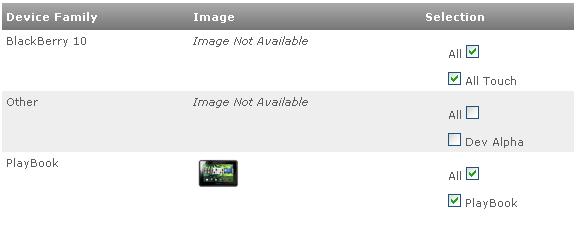Archive
Sort DOM Elements using JQuery
If you want to save a round-trip to the server when changing the sort-order of a list of HTML Elements, you can use Javascript and JQuery quite simply with this handy bit of code:
<html>
<head>
<script src=”jquery-1.8.2.js”></script>
<script language=”javascript”>
$(init);
function init()
{
var listitems = $(“#sortContainer .sortable”).get();
listitems.sort(function(a, b) {
return $(a).attr(“value”) – $(b).attr(“value”);
});
$.each(listitems, function(index, item) { $(“#sortContainer”).append(item); });
}
</script>
</head>
<body>
<div id=”sortContainer”>
<div class=”sortable” value=”5″>5<br></div>
<div class=”sortable” value=”2″>2<br></div>
<div class=”sortable” value=”1″>1<br></div>
<div class=”sortable” value=”10″>10<br></div>
</div>
</body>
</html>
Using HTML markup to display dynamic information
I wanted to associate Longitude & Latitude values with HTML elements on a page, and then using this data, display the KM distance from the current location. Using JQuery, and omitting the HTML5 Geolocation code, this is what I came up with
<html>
<head>
<script src=”jquery-1.8.2.js”></script>
<script lanaguage=”javascript”>
$(init);
function init()
{
$(“.autoDistance”).each(function()
{
$(this).html(renderDistance($(this)));
}
);
}
function renderDistance(obj,position)
{
var a = {
Latitude:obj.attr(“latitude”),
Longitude:obj.attr(“longitude”)
};
var b = { latitude:55.1, longitude:-6.9}; // current location
var distance = Math.sqrt(Math.pow( 69.1 * (a.Latitude – b.latitude),2) +
Math.pow(53.0 * (a.Longitude – b.longitude),2)) * 1.609344;
return Math.round(distance) + ” KM”;
}
</script>
</head>
<body>
Waypoint 1: <div class=”autoDistance” latitude=”55″ longitude=”-7″></div>
<br>
Waypoint 2: <div class=”autoDistance” latitude=”10″ longitude=”-7″></div>
</body>
</html>
Hope this helps someone!
BlackBerry 10 Submissions open to developers
As of this afternoon, BlackBerry has opened up it’s ISV portal for BB10 submissions.
I’m going to try submitting an app using a Playbook signing key, and will update this post if it gets accepted!

Decode Google Recaptcha with C#

The Google Recaptcha system is one of the most popular Captcha systems in use. To beat it, you’ll need to subscribe to a Human Captcha API, What I used was FastTypers.org (Also known as HumanCoders or ExpertDecoders). To test this, I used the standard Recaptcha setup under ASP.NET CLR4 using the code downloaded from http://code.google.com/p/recaptcha/source/browse/trunk/recaptcha-plugins/
I set up a Windows forms application, with a button called btnReCaptcha, and ran the Recaptcha website under the virtual folder /Recaptcha.Test-CLR4/ – and here is the code – Note the code 6Lf9udYSAAAAAGF0LkIu3QsmMPfanZH3T8EXs9fA is the public key that will be contained in the HTML code of the website hosting the website.
private void btnReCaptcha_Click(object sender, EventArgs e)
{
var wc = new WebClient();
var strHtml = wc.DownloadString(“http://www.google.com/recaptcha/api/challenge?k=6Lf9udYSAAAAAGF0LkIu3QsmMPfanZH3T8EXs9fA&hl=&”);
const string strChallengeRegex = @”challenge.{4}(?<Challenge>[\w-_]+)”;
var strChallenge = Regex.Match(strHtml, strChallengeRegex).Groups[“Challenge”].Value;
var bImage = wc.DownloadData(“http://www.google.com/recaptcha/api/image?c=” + strChallenge);
var solver = new CaptchaSolver();
solver.SolveCaptcha(bImage);
var strImageText = solver.LastResponseText;
strHtml = wc.DownloadString(“http://localhost/Recaptcha.Test-CLR4/”);
var strViewstate = GetViewStateFromHtml(strHtml, true);
var strEventValidation = GetEventValidationFromHtml(strHtml);
var strPostData = “__EVENTTARGET=”;
strPostData += “&__EVENTARGUMENT=”;
strPostData += “&__VIEWSTATE=” + strViewstate;
strPostData += “&__EVENTVALIDATION=” + strEventValidation;
strPostData += “&recaptcha_challenge_field=” + strChallenge;
strPostData += “&recaptcha_response_field=” + strImageText;
strPostData += “&RecaptchaButton=Submit”;
wc.Headers[HttpRequestHeader.ContentType] = “application/x-www-form-urlencoded”;
string HtmlResult = wc.UploadString(“http://localhost/Recaptcha.Test-CLR4/”, strPostData);
}/// <summary>
/// Gets a ASP.NET Viewstate from an aspx page.
/// </summary>
/// <param name=”strHtml”>The HTML to extract the viewstate string from.</param>
/// <param name=”urlEncode”>Should the response be Url Encoded.</param>
/// <returns></returns>
public static string GetViewStateFromHtml(string strHtml, bool urlEncode)
{
const string strViewStateRegex = @”__VIEWSTATE.*value..(?<viewstate>[/\w\+=]+)”;
var strViewState = Regex.Match(strHtml, strViewStateRegex, RegexOptions.Compiled).Groups[“viewstate”].Value;
if (urlEncode) { strViewState = HttpUtility.UrlEncode(strViewState); }
return strViewState;
}/// <summary>
/// Gets a ASP.NET EventValidation from an aspx page, it will be already urlencoded.
/// </summary>
/// <param name=”strHtml”></param>
/// <returns></returns>
public static string GetEventValidationFromHtml(string strHtml)
{
var strEventValidationRegex = @”__EVENTVALIDATION.{32}(?<EventValidation>[/\w\+=]+)”;
var strEventValidation = Regex.Match(strHtml, strEventValidationRegex, RegexOptions.Compiled).Groups[“EventValidation”].Value;
if (strEventValidation.Length % 4 != 0)
{
// Invalid Capture, try another regex.
strEventValidationRegex = @”__EVENTVALIDATION..value..(?<EventValidation>[/\w\+=]+)”;
strEventValidation = Regex.Match(strHtml, strEventValidationRegex, RegexOptions.Compiled).Groups[“EventValidation”].Value;
}
strEventValidation = HttpUtility.UrlEncode(strEventValidation);
return strEventValidation;
}
Basically, it makes a request to Google for a Challenge key, uses the challenge key to get the image, passes the image to the Human OCR API, and then captures the Viewstate and Event Validation from the page, then posts the decoded text, challenge key, back to the webserver.